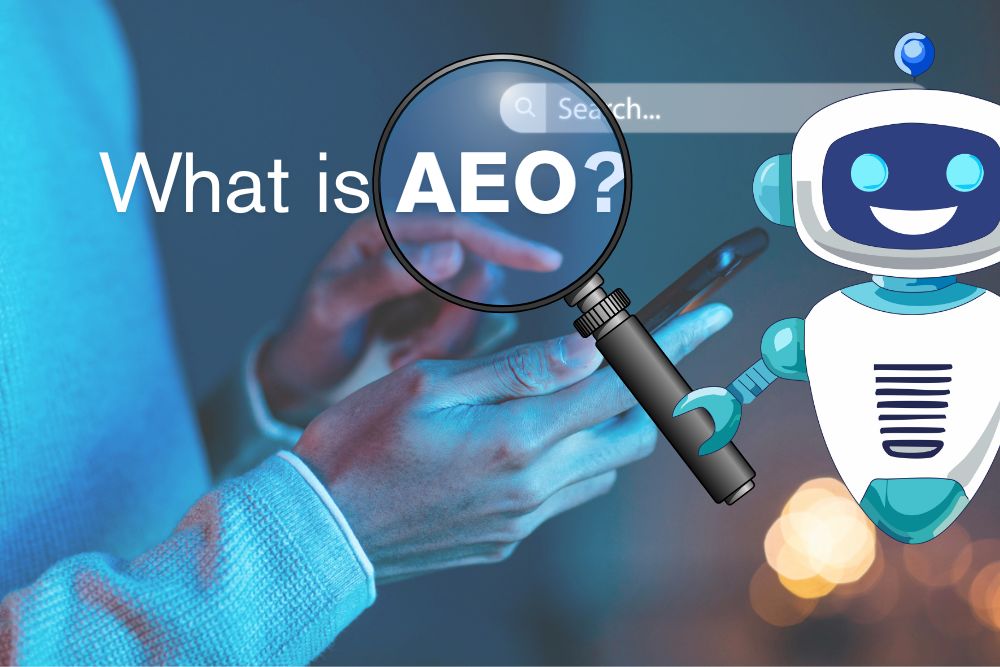In the digital marketing field, one such trend that’s gaining attention is Answer Engine Optimization (AEO). As search behaviors change towards asking questions in conversational formats, optimizing for answer engines becomes essential. In the past, simply stuffing keywords was enough; today, success depends on delivering precise, context-rich answers that address user intent. If you’re updating your website design or strategizing new digital marketing campaigns, understanding AEO is key to boosting your visibility and ranking in search engine results. This article helps you understand the complexities of AEO, its workings, and how you can utilize it to remain on top.
AEO and Its Importance
Answer Engine Optimization (AEO) is a specialized strategy within the broader phase of Search Engine Optimization (SEO). Unlike traditional SEO, which focuses on improving visibility in search results, AEO is designed to optimize your content for being displayed as direct answers to users’ search queries. As users depend on digital assistants like Siri, Alexa, and Google Assistant to obtain information, ensuring your content appears as an optimal answer becomes important.
Understanding the importance of AEO is simple when you consider user experience. Users expect instant, accurate answers rather than searching through multiple pages of content. By optimizing for answer engines, you meet this expectation and improve engagement, reduce bounce rates, and enhance the overall performance of your digital marketing strategy. Thus, AEO isn’t just a passing trend. It’s a necessary transition in optimizing web content to serve user behavioral changes, ultimately leading to increased brand visibility and success in the digital field.
How Search Engine Algorithms Influence AEO
At the heart of AEO are search engine algorithms that determine how content is ranked and displayed. These algorithms are sophisticated, utilizing artificial intelligence and machine learning to solve user queries and provide them with the most relevant results. For effective AEO, understanding these algorithms is essential. Algorithms assess various factors to determine the superiority and relevance of your content:
- Relevance: Your content must closely match the user’s query in terms of intent and context.
- Engagement: High user engagement signals valuable content, boosting its chances of being selected as an answer.
- Authority: Content from reputable sources is prioritized, emphasizing the importance of building a strong backlink profile.
Moreover, algorithms are constantly evolving, meaning you must stay updated on changes and adjust your strategy accordingly. Engaging in continuous education about algorithm updates can significantly enhance your AEO efforts, ensuring your content remains competitive and visible.
Identifying and Targeting User Intent
User intent is at the core of AEO. By understanding what users are searching for, you can customize your content to meet their needs precisely. User intent typically falls into one of three categories: informational, navigational, and transactional. To effectively target user intent:
- Conduct Thorough Research: Use tools like Google Analytics and SEMrush to analyze user behavior and popular queries related to your niche.
- Create Personal Profiles: Understanding your audience’s demographics and psychographics helps in crafting content that directly addresses their needs.
By effectively identifying and targeting user intent, your content becomes more relevant to users, thereby increasing the chances of it being featured as an answer to their queries. This strategic alignment between content and user intent is a cornerstone of successful AEO.
AEO Techniques in Digital Content Creation
Creating content that is optimized for AEO requires strategic planning and execution. Your content must be informative, comprehensive, and accurately address potential user queries. Here’s how you can connect your digital content creation with AEO principles. Start with keyword research, but go beyond traditional methods. Look for phrases and questions that users are likely to type into search engines. Incorporate these into your content in a way that feels natural and is contextually appropriate. Additionally, the format of your content matters. Consider using:
- Headers and Subheaders: Break content into digestible sections to improve readability.
- Bullet Points: Present information clearly and concisely, ideal for quick scanning.
- Lists and Tables: They are easy for users and algorithms to interpret.
By using these techniques, you make your content more answer-friendly, increasing the chances of it being picked by answer engines as a preferred response.
Utilizing Structured Data for Answer Engines
Structured data is a powerful tool in AEO, providing search engines with clear information about your content. By incorporating elements like Schema Markup, you can offer rich data snippets that enhance how your content is displayed in search results.
Utilizing Schema Markup allows you to define entities and relationships in your content that search engines can easily understand. This helps in creating enhanced search results with additional information like reviews, prices, and events, thus providing users with more context and boosting your visibility. To utilize structured data effectively:
- Implement Schema Markup: Use tools like Google’s Structured Data Markup Helper to apply Schema Markup to your webpages.
- Use Rich Snippets: They make your content stand out in search results, increasing click-through rates.
Structured data bridges the gap between your content and search engines, enhancing the chances of your content being featured as a rich answer.
Tracking and Analyzing Your AEO Performance
To ensure the effectiveness of your AEO strategy, regular tracking and analysis of performance metrics are required. By doing so, you can identify what works, refine your approach, and achieve better results. Utilize tools like Google Search Console and analytics software to monitor these KPIs, ensuring your AEO strategy remains aligned with your digital marketing goals. Key performance indicators (KPIs) for AEO include:
- Click-Through Rate (CTR): Measures how often users click on your listing in search results.
- Bounce Rate: A high bounce rate may indicate that your content isn’t meeting user expectations.
- Conversion Rate: Tracks how well your content is converting visitors into customers.
Answer Engine Optimization represents the future of how users interact with search engines. By adopting AEO, you integrate your digital marketing strategy with growing search habits, ensuring your content is not only visible but also favoured by both users and algorithms. As you implement these strategies, enhancing your website design, creating targeted content, using structured data, and utilizing the right tools and technologies, you make the way for sustained digital success. Continuous adaptation and a keen understanding of user intent and behavior help make AEO an essential component of your digital marketing toolkit.




